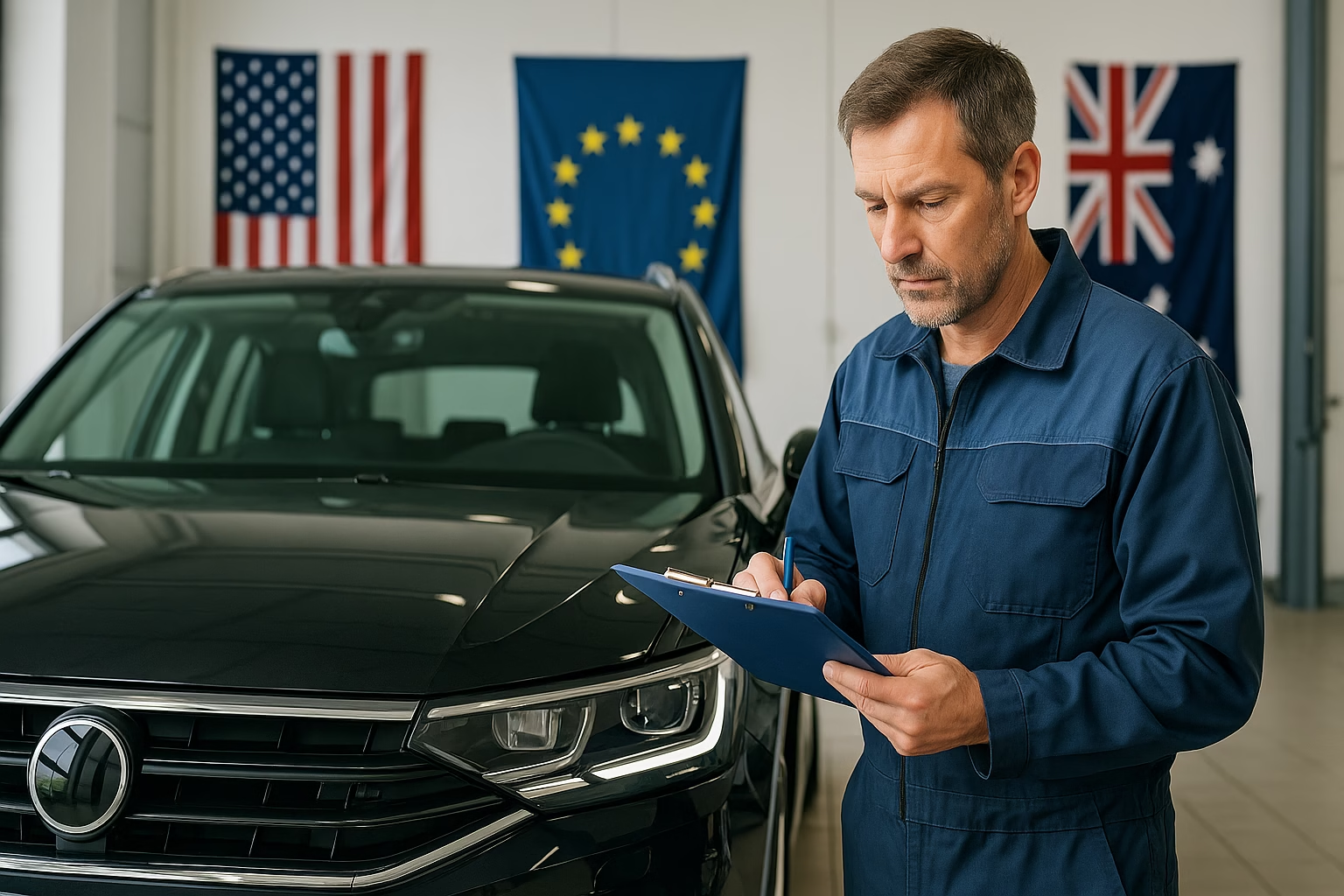Regulation and compliance are quickly catching up with the rapid adoption of advanced driver assistance systems. As cameras and radar become standard even on entry-level vehicles, the potential consequences of misaligned sensors are drawing the attention of road safety agencies, insurers and consumer protection bodies. ADAS servicing is no longer just an optional upsell; it is increasingly a legal requirement tied to roadworthiness, type approval and liability. Technicians who calibrate these systems must understand not only the technical procedures but also the regulatory frameworks that dictate documentation, training and equipment standards. This article compares the emerging legal and compliance trends in Australia, the European Union and the United States.
Australia
In Australia, federal and state governments are gradually codifying ADAS servicing requirements into consumer law. The Australian Design Rules (ADRs) specify minimum performance for safety systems fitted to vehicles sold locally. When a windscreen with a forward-facing camera is replaced or a radar behind the bumper is disturbed, the ADRs require the repairer to restore the system to the manufacturer’s specification. The National Heavy Vehicle Regulator (NHVR) has issued guidance on camera and radar mounting for heavy vehicles, and insurers are starting to require proof of calibration from panel shops. Equipment used to calibrate systems must comply with the manufacturer’s hardware and software versions, and technicians are increasingly expected to hold accreditation from OEM programmes or third-party training providers. Failure to provide calibration documentation can result in claim disputes or compliance fines.
EU
The European Union takes a more prescriptive approach because new ADAS technologies are subject to UNECE regulations such as UN R152 for autonomous emergency braking and UN R130 for lane-keeping. Under the EU type-approval regime, vehicles sold in all member states must meet these regulations and, crucially, any repairs or calibrations must maintain conformity. The incoming General Safety Regulation introduces mandatory driver monitoring and advanced emergency systems, which will add more calibration points. Workshops performing ADAS work must follow technical data from manufacturers or approved data publishers; there is growing pressure to certify technicians through national trade bodies or the Institute of the Motor Industry (IMI). The Block Exemption Regulation allows independent workshops access to data but only if they use OEM tools and record service history correctly. In several countries, insurance associations require a calibration certificate with date, VIN, type of calibration (static or dynamic) and environmental conditions before settling a claim. Non-compliant calibrations could result in vehicle inspection failures or liability in the event of a collision.
United States
In the United States there is a patchwork of federal guidance and state regulations. The National Highway Traffic Safety Administration (NHTSA) issues performance standards for advanced safety systems, but enforcement is often left to the states. Some states have enacted Right-to-Repair legislation giving independent repairers access to OEM calibration data, while others still defer to manufacturer procedures. Training requirements vary; some insurers in California and Massachusetts will not cover a repaired vehicle unless a pre- and post-scan and calibration certificate are provided. Organisations such as I-CAR, ASE and SAE offer certification programmes to demonstrate competency in ADAS servicing. Because there is no single federal mandate, technicians must stay up to date with bulletins from vehicle makers, local repair laws and insurance agreements. Aftermarket suppliers offering replacement windscreens or bumpers often caution customers that calibration may be necessary to comply with state consumer protection laws.
Global trends and compliance challenges
Across all regions the regulatory trajectory is clear: calibration is becoming a regulatory requirement rather than a recommendation. Authorities are concerned that sensors knocked out of position during a minor accident or wheel alignment can compromise safety. This has led to a proliferation of national standards, insurer requirements and OEM procedures. Many jurisdictions now expect workshops to document environmental conditions (temperature, lighting, levelness), scan tool software versions and measured alignment values. There is also increasing oversight on data handling: who owns the calibration data, how it is stored and who can access it under privacy laws like the EU’s GDPR. Technicians servicing vehicles that travel across borders must be familiar with multiple standards and be prepared to demonstrate compliance to regulators.
Staying compliant as a technician or workshop
For technicians and workshop managers, compliance is about more than passing an audit. It begins with investing in the right tools and training, ensuring that calibration targets and fixtures meet OEM specifications and that software updates are current. Workshops should adopt robust checklists that include pre- and post-scans, dynamic calibration road routes or static target positioning steps, and final verification tests. Every calibration should be documented with a printout or digital file containing the vehicle identification number, date, technician credentials, sensor type, calibration method, ambient conditions and a summary of results. Many insurers and fleet operators now require this documentation for claims acceptance. Finally, staying engaged with industry groups, attending technical seminars and monitoring changes in legislation will help ensure that your procedures remain compliant as technology and laws evolve.

Hiran Alwis is an automotive lecturer and ADAS specialist with over 15 years of experience in diagnostics, advanced safety systems, and technical training. He founded ADAS Project to help everyday drivers and workshop technicians understand and safely use advanced driver assistance systems.
